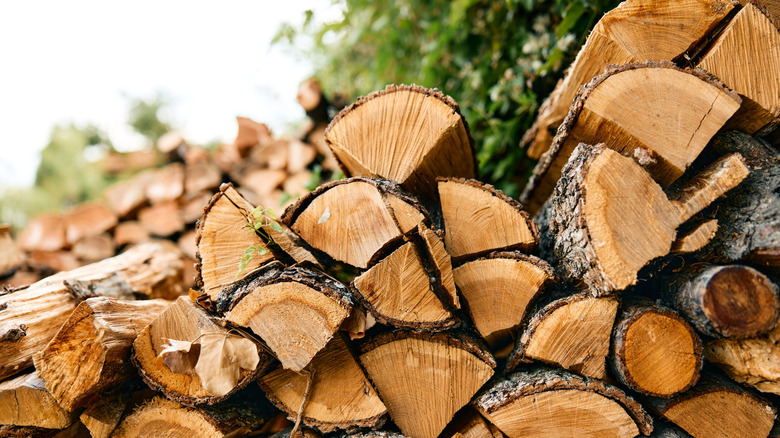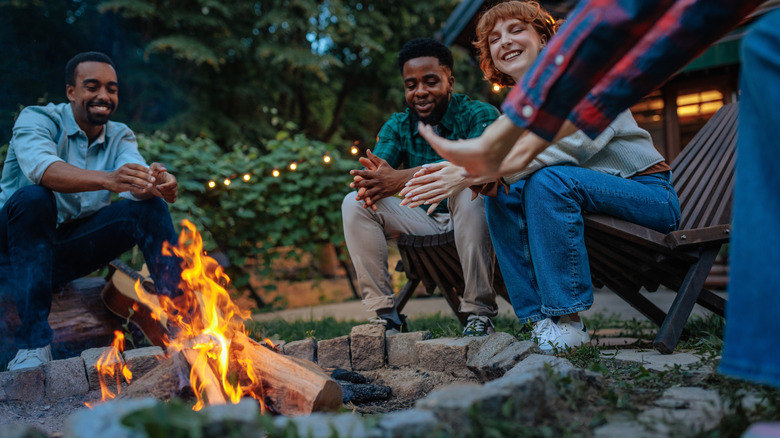Why Bringing Firewood From Home On Your Next Camping Trip Might Be Illegal
If you're heading across state (or even county) lines for a camping trip, and you have some extra firewood at home, it seems like the practical choice to bring the firewood with you. While there are some items you'll want to bring along for a camping retreat, firewood isn't one of them. In some states, it's illegal to move firewood around. By bringing firewood that's not local to the ecosystem you're camping in, you could inadvertently introduce other pesky things that aren't native to the ecosystem as well, namely invasive pests and diseases that can destroy regional habitats. You could be hit with hefty fines or even jail time for doing so.
Every state has strict regulations (or at least advisories) against moving firewood between distant locations. In California, for example, where Morro Bay is one of the best state parks for camping with secluded sleeping spots, firewood brought in from out of state is subject to inspection. If authorities find that the wood came from an area with tree pests, it will be confiscated. It's also illegal to move firewood out of or within certain counties of the state, since there are regional infestations, such as red imported fire ants or sudden oak death, that could be spread. As another example, perhaps you wanted to visit Maine's whimsical island campground Four Acres Woods. In Maine, all out-of-state firewood that hasn't been heat-treated is forbidden, and some of its campgrounds even require that all firewood be from within the park.
Know the rules before you move firewood to protect ecosystems
The regulations regarding moving firewood vary from state to state, depending on the prevalence of risky pests, quarantines in place, and the distance the wood is being moved. You can check the map from Don't Move Firewood that summarizes state-by-state firewood regulations. The site also provides an extensive list of invasive species to watch out for, which include bugs, fungi, and other diseases that are present in your area. However, many of those invasive species are hard or even impossible to spot with the human eye, so just because you can't see any signs of disease or bugs doesn't mean it's safe to transport.
As a rule of thumb, the National Park Service recommends that you buy firewood within 10 miles of your camping destination. You can use Firewood Scout to search for available firewood vendors close to your destination. There's one exception to the guidance against moving firewood from out of state, which is when the wood is heat-treated. If the wood is packaged and has a seal of certification either from the state or the U.S. Department of Agriculture, that means it's safe to move, since the heat treatment kills pests and diseases. Still, it's a good idea to check your campsite's rules ahead of time, since some parks prohibit bringing in outside wood regardless of treatment.

